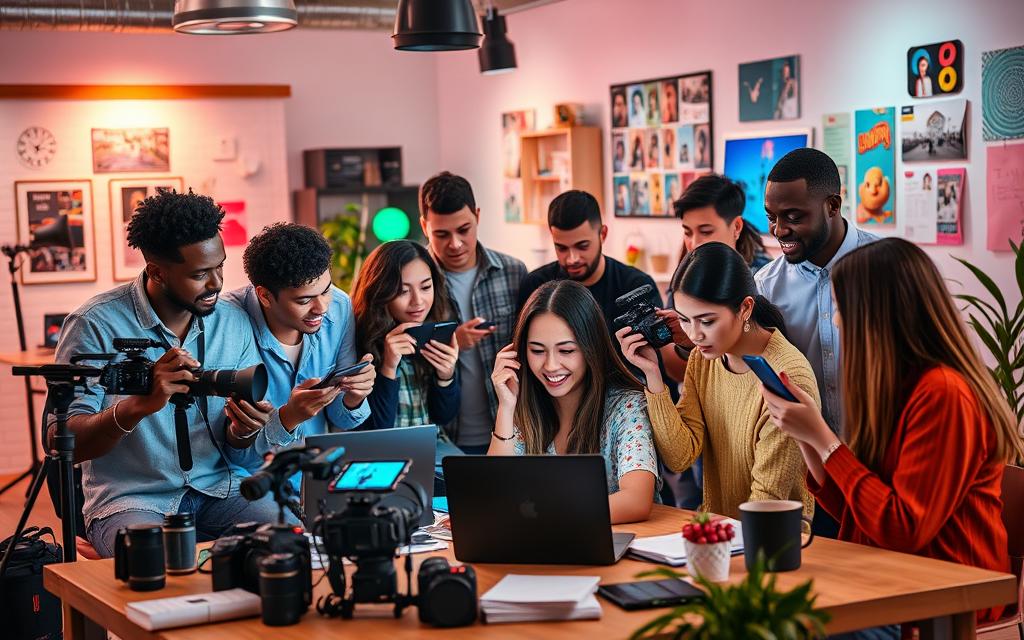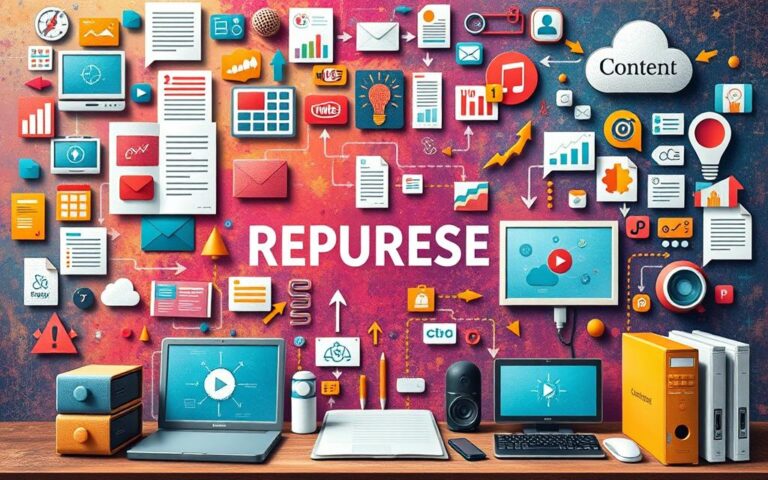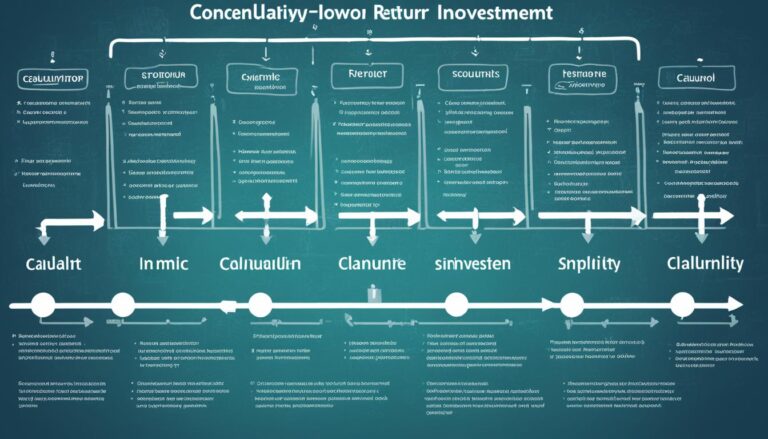Influencer Collaboration in Content: Tips & Strategies
Did you know micro-influencers can get up to 7 times more engagement than big influencers? This shows how influencer collaboration in content is key in digital marketing. Brands can reach more people and build trust by working with these influencers. This makes their messages hit home with consumers.
In today’s world, ads don’t always work. But influencer marketing is a must for any good content strategy. This article will share tips and strategies for great collaborations. We’ll look at different types of influencers, how to succeed, and avoid common mistakes.
Getting the hang of social media partnerships can really help your brand. It can also lead to real results that help your business grow.
Key Takeaways
- Micro-influencers can create high engagement despite smaller audiences.
- Setting clear objectives is essential for successful collaborations.
- Budgeting for influencer partnerships covers various compensation methods.
- Authenticity and relationship-building are critical for impactful influencer marketing.
- Utilizing a mix of influencer sizes can optimize reach and engagement.
- Analyzing post performance helps refine future influencer strategies.
Understanding Influencer Marketing
Influencer marketing is a key strategy that uses people with big followings on social media. These digital influencers make real content, making them trusted in their fields. Brands see the value in working with influencers to get more visibility and credibility.
The influencer marketing industry is expected to hit $24 billion by 2024. This shows how important these partnerships are.
What is Influencer Marketing?
This marketing uses endorsements from influential people to reach more people. The Q3 2023 Sprout Pulse Survey found over 80% of marketers think influencers are key to their social media plans. A good influencer marketing campaign finds the right influencers who match the brand’s values.
Growing Importance of Influencers in Digital Marketing
Almost half of consumers (49%) say they buy things because of social media posts at least once a month. Influencers are loved for being real and connecting with people. This is why brands from all over are teaming up with influencers to boost traffic and engagement.
But, there are still challenges like figuring out ROI and handling influencer relationships. Despite these, the benefits of more visibility and credibility keep driving the growth of influencer partnerships.
Types of Influencers
It’s key for brands to know about the different influencer types. They can be mega, macro, micro, or nano influencers. Each has its own strengths for digital marketing.
Mega, Macro, Micro, and Nano Influencers
Mega influencers have over 1 million followers, often famous people. They cost more but reach a lot of people. Macro-influencers have 100,000 to 1 million followers and target specific groups.
Micro-influencers have 10,000 to 100,000 followers and have a loyal audience. They often get better results because their followers trust them. Nano influencers have 1,000 to 10,000 followers and offer very personal connections.
Choosing the Right Influencer Size for Your Brand
Choosing the right influencer size is vital for marketing success. Brands need to think about their audience and goals. Macro-influencers are good for wide campaigns, while micro or nano influencers are better for specific groups.
Using a mix of influencer sizes can make campaigns stronger. This way, brands can reach and engage different people effectively.
Influencer Collaboration in Content: Best Practices
Successful influencer collaboration needs a few key practices. First, setting clear goals is crucial. Brands must decide what they aim to achieve, like boosting visibility or driving sales. This helps in measuring success after the campaign ends.
Defining Clear Goals and Objectives
Setting goals is key to a successful content marketing strategy. Brands should think about what they want to achieve. This could be increasing engagement or boosting sales. By focusing on important metrics, collaborations can meet marketing goals.
A clear vision helps brands communicate their expectations well. This makes working with influencers smoother.
Understanding the Influencer’s Audience
Getting to know the influencer’s audience is vital. It’s important to understand who they are and what they like. This helps brands find the right influencer for their campaign.
For example, Kim Kardashian’s huge following shows the power of audience alignment. Her endorsements have a big impact on sales. Partnerships that connect with the audience build trust and loyalty.

Strategies for Successful Influencer Outreach
Getting influencers to notice you takes a mix of charm and well-thought-out messages. The key to great influencer partnerships is a well-crafted pitch. Your messages should speak to influencers, showing you get their brand and audience.
How to Craft Your Pitch
Personal touch is crucial in your pitch. Start with a friendly hello and a quick intro to your brand. Then, clearly explain the campaign, what you need from them, and what they’ll get in return.
Emphasize how their special talents can boost your campaign. A nod to their past work can make them more likely to say yes.
Effective Communication Techniques
Good communication is key for influencer outreach success. Choose the right channel, like direct messages or email, based on the influencer’s preference. Keep your tone professional yet friendly, and be clear about your goals.
Make your ask clear and direct. Don’t forget to follow up. Influencers are busy, so a polite reminder can help seal the deal.
The Role of Budgeting in Influencer Collaborations
Proper budgeting is key for brands aiming to meet their marketing goals. It ensures costs are covered and investments are smart. With influencer marketing spending set to hit $4.62 billion in 2023, it’s crucial to understand this financial landscape.
Allocating Resources for Influencer Partnerships
Brands should look closely at their spending on different influencer types. Nano-influencers charge $10 to $100 per post, while macro-influencers ask for $5,000 to $10,000. This shows the importance of strategic planning based on each campaign’s goals and the influencer’s reach.
Understanding Compensation Structures
Exploring different payment methods can make partnerships more effective. Brands use fixed fees, product exchanges, and incentives tied to performance. This way, influencers earn more when their content performs well, aligning their success with the brand’s goals.
Creating a budget that matches campaign goals and expected outcomes is essential. Brands should also budget for legal and compliance costs to avoid risks. By using analytics to track audience reactions, brands can improve their budgeting and achieve better results in influencer partnerships.
For more on boosting engagement through smart content, check out this guide on creating content that resonates.
Types of Influencer Collaborations
Influencer collaborations come in many forms, each with its own goals. By knowing these types, brands can craft strategies that boost engagement and reach.
Sponsored Posts and Paid Partnerships
Sponsored posts are key in influencer marketing. Influencers get paid to promote brands or products. These posts can build trust, making them valuable for brands.
Brands can make sponsored posts work by using clear messages and visuals that fit the influencer’s style.
Product Gifting and Affiliation Programs
Product gifting is another way brands work with influencers. By sending products, brands get authentic reviews and content. This helps show off their products naturally.
Affiliation programs let influencers earn from sales they help make. This motivates them to promote more, which can lead to more sales.

Marketers need to understand these influencer collaboration types. Each method—sponsored posts, product gifting, or affiliation programs—should match the brand and influencer’s goals. This creates real partnerships that can lead to great campaigns and lasting relationships.
For more tips on creating engaging content, check out this resource.
Measuring the Success of Influencer Campaigns
It’s key to check how well influencer marketing works for brands. They need to pick the right metrics to see if their efforts pay off. Important KPIs include social media stats, reach, and how many people take action after seeing influencer posts.
Key Performance Indicators (KPIs) to Monitor
Marketers should watch how much people engage with influencer content. Likes, shares, and comments are big signs of success. Also, seeing more followers on social media means more people are interested in the brand.
Web traffic is another important thing to track. Tools like Google Analytics show if influencer posts bring more visitors to a website.
Analyzing ROI from Influencer Collaborations
Doing a deep dive into ROI is vital for seeing if influencer partnerships are worth it. By comparing what’s made to what’s spent, brands can see if they’re making a profit. Using special codes and tracking links helps figure out which influencers are most effective.
This info helps brands make better choices for future influencer work. It lets them tweak their marketing plans to get even better results.
Common Mistakes to Avoid in Influencer Marketing
Effective influencer marketing needs careful attention to avoid common mistakes. One big error is not setting clear expectations. Without clear guidelines, misunderstandings can lead to poor results. It’s important to have clear standards for a smooth partnership.
Failing to Define Clear Expectations
Clear expectations are key to a successful partnership. Brands that don’t share their goals with influencers often face problems. By giving influencers specific tasks and goals, campaigns can work better.
Ignoring Audience Alignment and Engagement
Choosing the wrong influencers can also be a mistake. It’s important to pick influencers who match your target audience. Working with influencers who connect with your audience builds trust and increases reach. Regular checks on influencer performance help keep campaigns on track.
Conclusion
Getting influencer collaborations right is key. It’s not just about getting people to talk about your brand. It’s about knowing the market, picking the right influencers, and setting clear goals that match your marketing plans. As influencer marketing grows, brands need to use these partnerships to get noticed and grow.
Working with influencers who speak to your audience lets brands reach more people. This can lead to more sales and loyal customers. Plus, it’s cheaper than old-school ads, offering a chance for big wins.
To make influencer partnerships work, businesses need to build real connections. They should share values with their influencers. Having clear goals and tracking results helps brands make smart choices. This way, they can improve their marketing and build trust with their audience.
FAQ
What is influencer marketing?
Influencer marketing uses social media endorsements from people with many followers. These influencers help brands look more credible and reach more people.
How do I choose the right influencer for my brand?
First, know what you want to achieve. Then, look at the influencer’s followers, how active they are, and what they post. It’s important their followers match your target audience.
What types of collaborations can I do with influencers?
You can work with influencers in many ways. This includes sponsored posts, giveaways, gifting products, and affiliate programs. Choose what fits your goals and the influencer’s strengths.
How can I measure the success of my influencer campaigns?
Track success by looking at engagement, reach, and conversions. Also, check the return on investment (ROI) to see if it’s worth it financially.
What are common mistakes to avoid in influencer marketing?
Don’t skip setting clear goals or ignore who the influencer’s audience is. Also, keep communication open. These steps help avoid problems and lead to better results.
Why is budgeting important in influencer collaborations?
Budgeting helps you spend wisely on influencer work. This includes paying them, giving them products, and covering creative costs. Knowing how to pay them right helps you get the most value.
What are the different types of influencers?
There are four main types of influencers. Mega influencers have over a million followers. Macro, micro, and nano influencers have fewer followers but offer different benefits for brands.
How should I craft my pitch to influencers?
Make your pitch personal by showing you know their brand and audience. Talk about how you both benefit, set clear goals, and mention specific content. This makes them more likely to respond positively.
What are the benefits of influencer collaboration in content strategy?
Working with influencers boosts your brand’s visibility and trust. It also increases engagement with real content. This makes your promotional efforts more believable and effective.







